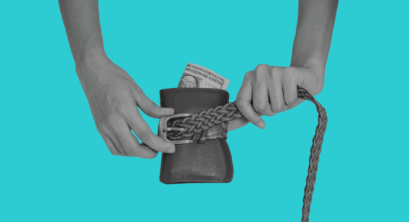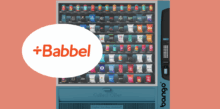The streaming squeeze: inside the new economics of entertainment
by Marta Trias Gray | 11 Nov 2025

Household budgets are under pressure. Groceries, energy, rent… everything costs more. People are cutting costs wherever they can, but one expense remains: streaming.
Even as inflation bites, viewers are protecting their SVOD subscriptions. Around one in three households have cut other costs just to keep streaming, and many still pay for several services. Streaming has shifted from luxury to necessity.
Drawing on insights from 2,000 US SVOD subscribers, the Bango Streaming squeeze report explores how ad tiers, bundling, and smarter billing are helping subscribers stay connected without overspending. It also looks at a new kind of subscriber – flexible, value-driven and selective – and what this means for the future of entertainment.
The rise of the ‘Savvy Subscriber’
Nearly two-thirds (63%) of subscribers in the report say they can’t afford every streaming service they want, yet most still subscribe to two or more. They’re cutting back strategically, not completely.
The result is a new kind of behavior: subscribers rotate, downgrade, or join bundles rather than cancelling outright. They’re managing streaming like any other essential expense – optimizing for value. People still love streaming. But they’re managing it differently.
This is the era of the Savvy Subscriber: pragmatic, flexible, and focused on getting the most from every dollar. The full report explores how this behavior shifts by age and income and what it means for subscriber retention.
What stays, what goes
When budgets tighten, not every service is equal.
Some SVOD services have become untouchable. These are the ‘Forever Subscriptions’ – the ones people refuse to cancel, even when money is tight. One in particular leads by a wide margin: Netflix, named by a majority (60%) of viewers as their must-keep service. Others, like Prime Video and Disney+, follow at a distance.
That level of loyalty is rare. But for smaller or emerging players, the opportunity lies in connection, not competition. Bundling with these forever favorites extends reach and retention, keeping brands in the mix when others are dropped.
Loyalty now comes from belonging, not just branding.
Bundling becomes survival
For many households, bundling has become the simplest way to stay subscribed.
Almost two-thirds (65%) of subscribers say they’d prefer to manage their subscriptions through bundles rather than individually. One in five has already joined a bundle in the past six months – rising to nearly a third among Gen Z. The savings are meaningful, averaging around $16 per month.
For consumers, bundling offers value and simplicity. For providers, it offers protection – reducing churn, increasing engagement, and embedding services into broader digital ecosystems.
Control and co-opetition
The next wave of streaming growth won’t come from adding more subscriptions. It will come from giving people greater control.
The winners will be those that make joining, paying, and managing subscriptions seamless. Flexible pricing, unified billing, and frictionless activation will separate the brands that grow from those that plateau.
Streaming is entering an integrated chapter – one where the strongest growth comes not from competition, but from co-opetition.
The Bango perspective
The streaming squeeze isn’t a sign of decline – it’s a sign of transformation.
Consumers are choosing to keep streaming, but on their own terms. They’re asking for simplicity, value, and connection. For the industry, that means building models that make staying subscribed the easy choice.
This is where the Digital Vending Machine® (DVM™) from Bango comes in. It connects streaming services to telcos, banks, retailers, and other resellers through a single connection – enabling Super Bundling at scale and removing the friction that slows growth.
Streaming isn’t slowing down. It’s getting smarter.
Subscribe to our newsletter
Get the latest subscription bundling news and insights delivered straight to your inbox.



